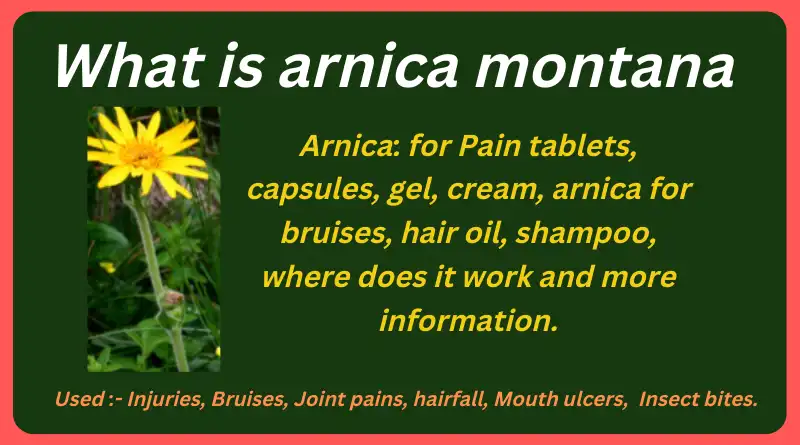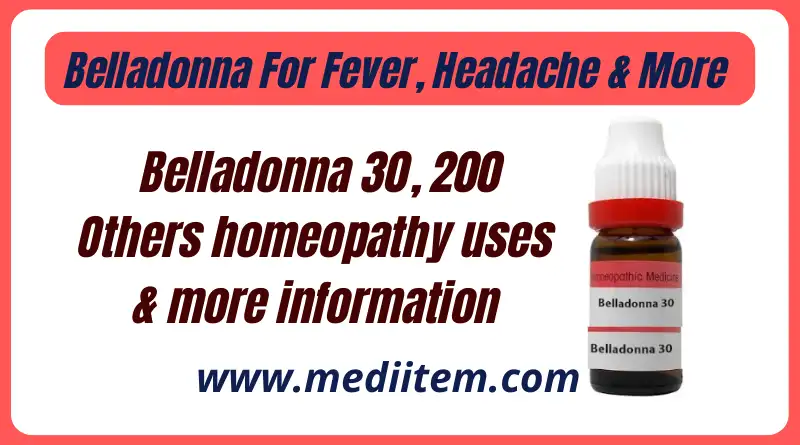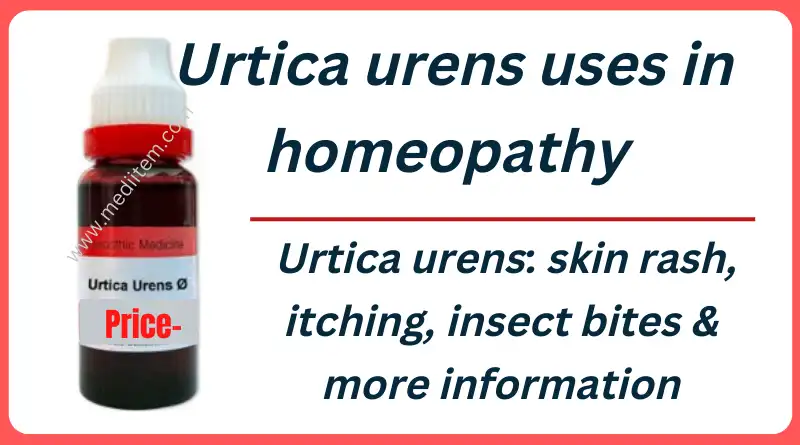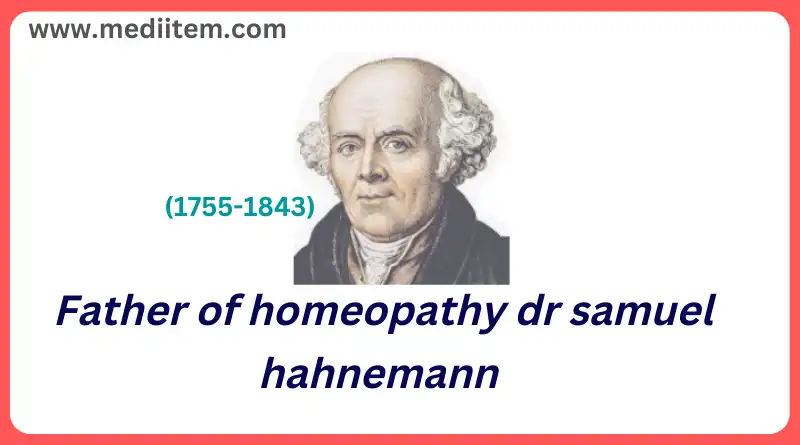What is arnica montana
What is arnica montana: for Pain, and as available in the market tablets, capsules, gel, cream, arnica for bruises, hair oil, shampoo, where does it work, and more information. (It is a homeopathic pain killer that will serve you well for any pain, Injuries, Bruises, Joint pains, hair fall, Mouth ulcers, and Insect bites)
Plant Description: Arnica montana is a very glandular rhizomatous plant, it is the Latin name for a perennial that grows 1 to 2 feet tall with bright, yellow flowers that appear in July and August. It is found in moist, upland meadows in the foothills and mountains of northern and central Europe and Siberia. It is also sparsely found in the northwestern United States.
The most common names for arnica are mountain, Leopard Bane, and mountain tobacco. Arnica is toxic when ingested at full strength, but can be used as an ointment, gel, or cream on intact skin or taken internally when diluted homeopathically.
Arnica montana for gargling: For this treatment, the same isotonic infusion is used, which should be applied in gargles to relieve tooth inflammation and gingivitis.
Arnica tablets: It is the best sports pain reliever.
(Diluted pills) Arnica in capsules (chochos) It is recommended to drink it two to three times during the day.
What is arnica montana ointments
Arnica extract as a component of gels, ointments, creams, and lotions helps in various inflammatory conditions. Arnica point /gel is recommended to be applied two or three times a day.
Arnica montana hair oil
arnica hair shampoo
Arnica gel
Arnica appears to be helpful in managing common osteoarthritis symptoms, such as joint pain and stiffness. research has found that the everyday application of arnica mont gel was as effective as ibuprofen gel for pain relief and hand function.
what is arnica montana used for
What is arnica montana used for Muscle and Joint Pain Whether due to an injury, poor posture, or pain caused by the rhythm of daily life, the properties of arnica help eliminate this type of discomfort.
Athletes have long known what arnica is for and use it after training to perform a restorative massage with which they not only recover their muscles but also prevent muscle and joint injuries. It is very effective in reducing inflammation in the area that has suffered muscle overload or discomfort due to poor posture and also due to joint pain. arnica is a plant widely used for the preparation of gels and ointments for pain. If you want to know what arnica is for, then we will explain all its uses and how to get Arnica Gel quickly and safely.
Various arnica ointments are used topically in the treatment of bruises, sprains, bruises, rheumatic diseases, and in cases of superficial inflammation of the skin. it is used on the skin and is effective in treating muscle and joint pain.
*Very beneficial Natural Remedy in case of muscular tension caused by a long day of work or after a sports activity.
*those purple spots that appear on the skin due to the accumulation of blood and that can arise as a result of a blow or a fall.
Applied to the area with circular massages, it relieves lower back pain almost immediately, a pain that makes movement difficult and can appear when one least expects it.
Arnica for tendinitis Tendon pain is known as tendonitis, it happens when the tendons become inflamed, so in addition to carrying out some type of physical therapy, natural remedies also help reduce discomfort considerably.
In this case, applying an arnica ointment will help relieve and reduce inflammation in the area thanks to its analgesic and anti-inflammatory properties. Arnica for Insect Bites Although not frequent, insect bites can cause complications, especially in allergic people. With the analgesic properties of arnica gel, you will avoid the appearance of bruises and consequently the pain caused by the injury.
it is for strains and sprains The yellow flower of arnica, by itself, has anti-inflammatory and analgesic substances, which is why it is an excellent treatment in case of suffering an injury caused by a fall.
*The gel based on Arnica montana flower extract, is a compound of natural products where Arnica stands out, which has both analgesic and anti-inflammatory properties, acts by stimulating blood circulation in the area that is applied, and increases blood causes bruises or what we know as bruises do not appear.
*Arnica gel is easy and comfortable to apply because it is quickly absorbed.
It is very good to have an Arnica gel on hand when you have children and even more so when they start to walk because they usually take one or another bump on the head, you can use it on children from one year old without any problem but never apply it on open wounds.
Arnica cream
Arnica cream is a natural first-aid product that will help relieve pain and reduce inflammation in sprains, breaks, bumps, or tears.
Containing Helenaline, arnica gel is an excellent ally to treat all kinds of strains including those produced in the cervical area caused by a contracture, poor posture or sudden movement, or by a muscle injury that causes cervical pain. The arnica cream provides an immediate refreshing sensation, calms irritated skin, and quickly relieves the discomfort of a mosquito bite or other insects.
On the other hand, it reduces inflammation and helps reduce itching and pain. How to use Arnica to reduce inflammation The application of an arnica cream can be done 2 or 3 times a day on the desired areas, through a gentle massage. In any case, the important thing is to make sure that its composition is based on natural ingredients like the ones we have already shown you. For best results, once you have applied the Arnica cream, cover the area with a warm cloth for a few minutes. This will help the skin absorb the product better and the effect will be faster and longer lasting.
How to use: put a sufficient amount in the hand apply to the skin and massage. repeat twice a day if necessary, and wash your hands after application.
Warnings: For external use, avoid contact with eyes, mucous membranes, and wounds.
Arnica for bruises
It benefits the healing of bruises. Arnica helps speed up the healing process of bruises. It is believed to stimulate the production of white blood cells, which helps remove blood and fluid congestion in the affected area. Plastic surgeons find it helpful in reducing bruising after cosmetic surgery procedures.
Bruises not associated with physical trauma are unlikely to respond to arnica. These bruises should be evaluated by a health professional, as they can be caused by a wide variety of medical conditions.
Arnica oil for pain
*Relieves swelling – Arnica is famous for its use in reducing edema, especially when caused by sprains, muscular strain, insect bites, or broken bones.
*Helps relieve pain A study of marathon runners showed that those who took arnica experienced a lower level of muscle soreness immediately after running compared to those who took placebo pills. Other research has shown arnica to be an effective alternative to non-steroidal anti-inflammatory drugs for post-traumatic and post-operative pain control.
Where does arnica montana work?
Where does arnica montana work (Your FAQ), is a medicinal plant that serves as an aid in the treatment of bruises, rheumatic pain, abrasions, and muscle pain; thanks to its anti-inflammatory properties and analgesic properties.
Arnica montana is also often used for the following cases:
- Injuries
- Joint pain.
- Arthritis.
- Hairfall.
- Muscle strain.
- Insect bites.
- Muscle pain.
- Sore throat.
- Muscle tonic.
- Mouth ulcers.
- Bleeding.
Symptoms of arnica montana
It is the main medicine for injuries, contusions, and blows, especially of soft tissues, and with the characteristic, in general, of being accompanied by blood extravasations, usually red-bluish in color.
Immediate or distant consequences (even years), local or general, of even minor injuries (compresses with Arnica 200. can be used externally, on the site of the injury, when it is localized).
Sprains, fractures; exaggerated or prolonged efforts or fatigue, physical or mental, which actually act as traumatisms and have the same meaning; disorders by straining muscles or tendons, or lifting weights, heavy things.
Pain from excessive exertion.
Sensation throughout the body of having been hit: it is sore as if hurt, battered, hypersensitive as if covered with bruises; cannot tolerate pain. The prescription of Arnica usually accelerates the reabsorption of hematomas and prevents suppuration or other septic conditions. The effects of “sorrow, remorse, or sudden financial loss” (Boericke) can also be considered trauma, albeit mental. Especially sore in the parts where it supports.
What is arnica montana rheumatism symptoms
Gout and rheumatism, with great fear of being touched or hit by people who are nearby. Pains before the chill. Soreness in the limbs when they touch the bed, or during fever in the limbs on which he is lying. Joint pains as dislocated or bruised. Splinter pain in the fingers of the hands.
Cold in the hands or the tips of the fingers, with a hot face or head; cold forearms in children Tired or swollen feet from walking a lot. Weakness in tendons and joints, especially following a blow or sprain; in the hands when grasping something. left hemiplegia. Varicose veins; Varicose ulcers. Swollen hand veins tetanus etc.
Where can you buy arnica de montana?
You can buy arnica montana , in its different presentations, in retail pharmacies in any city, naturist centers, If you have decided to try our Arnica gels or potency you can do it and order comfortably at as well as online stores such as AliExpress or Amazon, Online Stores of Natural Products. You have an extensive catalog of natural products for pain so you can enjoy all the good times of the day without obstacles.
Arnica montana homeopathy uses
Arnica montana homeopathy uses for mental symptoms
*** Stubbornly states that he feels very well, although, in reality, he is very ill or seriously ill; he is not clearly aware of his true condition and says that nothing is wrong with him, that he is fine, that he is not sick, and that, for that reason, the doctor has nothing to do there and sends him back to his house. He declares all this between a little delirious and a little irritated.
*** Fear of being approached, for fear of being touched. These fears reach such an extreme that he prefers to be left alone, for a mental reason (he does not want to start a conversation) and for a physical reason (he does not want to be touched, he fears contact, because of his great suffering) (Kent).
*** Stuporous state (in infectious febrile states, typhoid or of traumatic origin) that can lead to unconsciousness, especially during fever or when getting up from lying down; often with incontinence of feces and urine; he is absent, absorbed, sitting without moving.
If they ask him a question, he comes out of his torpor and answers well, but the stupor returns immediately after answering or before finishing, or he falls asleep when he answers (Kent). Murmuring delirium, worse during the chill; delirium tremens. Carphology, pinch the blankets.
**he forgets the words and what he is going to say, while he speaks. He does not remember what he has said or what he is going to say; he makes mistakes in speaking, misplacing words or using the wrong words. Hence the rejection of the conversation and also to answer; he is irritated by being questioned.
**Fear of public places; from walls and tall buildings falling on him (Arg.N.). He sleeps restlessly, he wakes up suddenly, with great terror, and puts his hand to his heart: the fear of dying suddenly wakes him up, with precordial sensations that make him think that he has a heart disease, without really having anything.
*The child cries or screams before coughing (and in the whooping); crying aggravates it; worse for consolation.
*During the fever there is anguish, indifference, restlessness, and sighs.
*Fighting, angry, suspicious, provocative, critical. Or soft, sweet.
*Scary. Hypersensitive to noise and pain. Hypochondriacal anxiety.
*He talks in his sleep.
*Indifferent, physically and morally depressed, sad, fatigued; is not able to work.
What is arnica montana general symptoms
General symptoms of arnica montana homeopathy uses –
***Anything you are lying on, or the bed, feels or seems very hard, no matter how soft it is; he constantly complains about it and keeps moving from side to side looking for a soft spot. He also complains about sleeping.
**Hemorrhages in the tissues or the skin or from the orifices; bruises; ecchymosis. venous stasis; varicose veins. Inflammation of blood vessels. Thrombosis.
**Worse from the slightest contact, in damp and cold weather, sleeping, in the evening or at night, from rest, from the movement of the affected parts, from shaking, lying on the left side, from wine, from traveling, with the crescent moon. Better by movement in general, lying down with head down, by a cold bath. You want fresh air.
*Sudden onset of disorders and pain.
*General exhaustion.
*Stroke with a red face,
*Disorders due to alcoholic beverages or coal smoke.
Arnica desires and dislikes
- *Aversion to milk; to the meat; to the broth
- *Desire for whiskey; of vinegar.
What is arnica montana particular symptoms
*Vertigo when closing the eyes; when getting up from a squat or lying position; moving the head; objects spin when walking.
***Consequences of blows to the head, concussion; skull fractures; traumatic meningitis; and apoplexy; when blood extravasation is suspected, to facilitate and accelerate its reabsorption. The head (or head and face, or face only) is hot, and the nose and the rest of the body are cold, especially during chills and fever.
Headache with fever; burning headache with the cold body; headache like a nail in the temples or as if the skin were retracted, worse on the right and by movement, or pressing from the inside out. Headaches caused or aggravated by walking, climbing, thinking, reading, and after eating, worse from irritability.
**Eye injuries; with pain in the eyes; diplopia, ocular palsies, retinal hemorrhage. Ecchymosis subconjunctival or eyelids, worse from cough. Accelerates the reabsorption of retinal hemorrhages. Ocular inflammation due to foreign bodies; burning tears. iritis. Go black; darkening of sight Pupils insensitive to light; miosis. Eyes sore from visual strain; prominent or semi-open.
*Noises in the ears due to a rush of blood to the head. Ears bleed. Hearing loss due to blows or typhoid. Pain as if beaten in the ears.
**Epistaxis: due to blows; when blowing your nose; by efforts; when washing your face; during whooping and typhoid; flowing black blood The nose is cold at the tip, and sore; or swollen, with ecchymosis. Tickling inside the nose.
**Hot face with cold hands. Red face when shivering; with heat during chills; heat on the lips A single red cheek with hard swelling. Very red, sunken face. Herpes on the face. Right facial paralysis.
The cheeks are very red, swell when breathing and the mouth is deviated (cerebral hemorrhage). Trismus with a closed mouth. Ulcers in the corners of the lips; fissures in the lips. Pustular eruption on the face, especially periocular. Empyema of the maxillary sinus. Submaxillary glands and neck nodes are swollen and painful.
*** Rotten eggs are a common denominator that you feel in the taste (worse in the morning), in the eructations with that smell or taste (especially in the morning when you get up), and in the smell of flatus.
**Foul breath, putrid. Bitter, putrid taste during fever. White tongue or with a brown center. Bloody saliva. Pain in the teeth due to blows or postoperative after curing or filling caries, or pain in the gums after an extraction. The sensation of something hard in the throat; noise when swallowing
*Thirst during chill. Eructations bitter or tasteless or with the taste or smell of rotten eggs. Foul vomiting. Hematemesis; vomiting of dark coagulated blood. Gastralgia eating; stone feel. Feels as if the stomach is against the spine.
**Soreness in the groin or pelvis, must walk bent. Liver pain, worse lying on the left side. Stitches under the false ribs. splenitis Offensive fetuses with the smell of rotten eggs. Gases that press up and down. Involuntary stools, especially sleeping, often with urinary incontinence (in febrile patients); purulent, bloody.
Hard and swollen abdomen, worse on the right. Diarrhea in tuberculosis, worse lying on the left side. dysentery with oliguria and the ineffective urge to move the bowels; long intervals (between 4 and 6 hours) between bowel movements. You should lie down after each bowel movement.
Constipation: full rectum, the stool does not come out; feces as ribbons due to retroversion of the uterus or prostate hypertrophy. Hemorrhoids; rectal prolapse alternating with hemorrhoids.
** Urination with a weak stream, you have to strain and wait until the urine comes out or, on the contrary, you have to hurry when you feel the desire to urinate because, if not, you urinate; and leak urine when running. Very painful urination. Urine leaks involuntarily, worse after childbirth. Enuresis; urinates sleeping. Post-traumatic or postoperative bladder conditions. Bladder neck spasm; retention of urine on exertion or in dysentery.
Renal colic with agonizing pain in the back and hips as if passing a stone. traumatic hematuria. High-density urine; thick, with pus; dark brick-colored sediment.
*Friction phimosis, sore and swollen parts. Penis and testicles are swollen and purple-red, post-traumatic. Orchitis due to contusion. Hydrocele. Increased sexual desire, worse from less excitement; impotence due to excesses
*Violent cough with facial herpes. cough with epistaxis by yawning; out of anger; for excessive yelling or crying; or yelling and crying before coughing. Coqueluche: the child cries before the attack and after. Cough of cardiac origin, worse at night, sleeping or exercising. Bloody expectoration; hemoptysis due to blows or violent muscular or respiratory efforts. Hoarseness from talking too much.
**Chest is sore when coughing, you must grab it or hold it with both hands; hurts when pressed or touched; pleurodynia (Ran.B.); chest pain and nipple pain. All joints and bones of the chest, and ribs, hurt, worse when moving, breathing, or coughing. traumatic pleurisy; pneumothorax. Angina pectoris with severe pain in the left elbow. Fatty degeneration or hypertrophy of the heart.
Cardiac exhaustion or transient cardiac hypertrophy from violent or unusual exertion (Caust., Rhus.T.), with palpitations on moving. Edema of cardiac origin with very bothersome dyspnea.
** Postcoital or intermenstrual metrorrhagia. Menses early, abundant, bright-red, with clots; with hot head and cold extremities. the threat of abortion due to blows or falls. The movements of the fetus are very painful and wake her up at night; seems to be through. vomiting of pregnancy. ovaries and uterus are very sore when walking; you should make it folded. violent injuries, worse when suckling the baby (Sil.). Asphyxia of the newborn (Ant.T., camps.).
Varicose veins of the vulva and vagina with soreness. very sore genital areas after childbirth; prevents postpartum hemorrhage and puerperal complications. In menopause: soreness, extreme weakness, hot head, cold body, minor ecchymosis, contact.
Arnica herbal medicine
Used in herbal medicine to help relieve pain and/or inflammation in muscles and joints (e.g. sprains, bruises, joint pain). Provides symptomatic relief of pain associated with osteoarthritis in the knee and hand. It is an Anti-inflammatory topical treatment for the whole family for muscular aches & pains, strains & sprains, stiffness and bruising, etc.
Arnica side effects
Or warnings:
*For external use only.
*Do not apply on open wounds and broken skin.
*Avoid contact with eyes and mucous membranes.
*Do not bandage.
*Do not apply with external heat, such as an electric heating pad, as this may result in excessive skin irritation or skin burn.
*Do not use if allergic to Asteraceae/ Compositae (daisy) family and in case of known allergy to any of the ingredients in the product.
*Consult a healthcare practitioner if symptoms persist or worsen.
*Do not use it if the safety seal is broken.
*Keep out of reach of children.
*Medicinal ingredient: 50% fresh Arnica tincture: 5 g gel contains tincture of Fresh Arnica (Arnica montana L.) flower* (1:20)…2.5 g, equivalent to 0.125 g dried flower.
*Non-medicinal ingredients: Ethanol 94%, purified water, glycerol 85%, ammonium acryloyldimethyltaurate/VP copolymer.
Arnica homeopathic products are available in topical and oral forms in several different potencies ranging from Q- 30,200,1m etc.
More information
Read more: How to reduce blood sugar level immediately
Read more: Homeopathy medicine for acidity
Read more: Homeopathic medicine for sexually long time
Please subscribe to my channel and follow
YouTube



